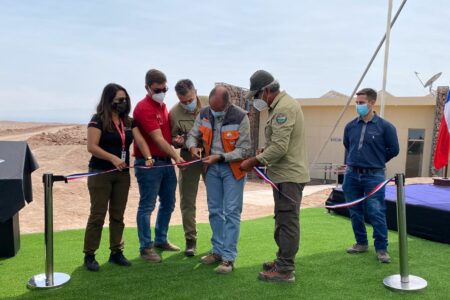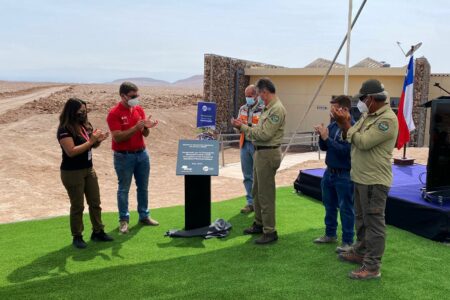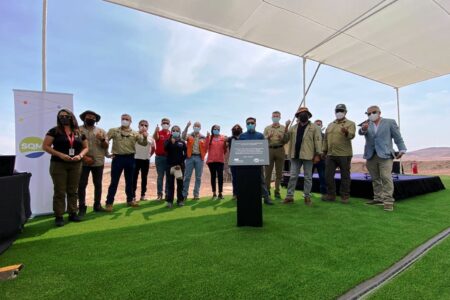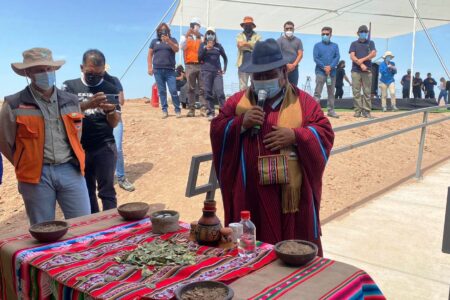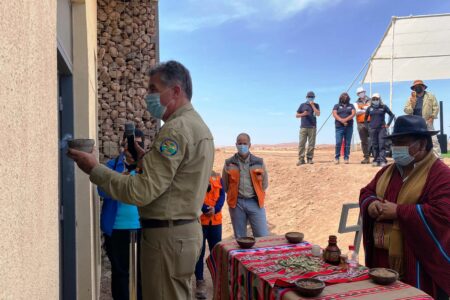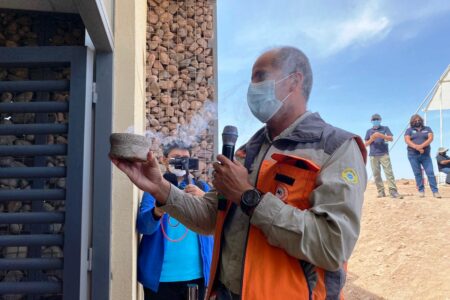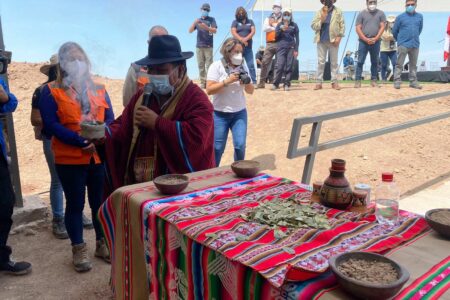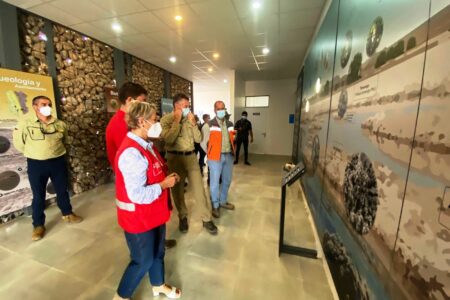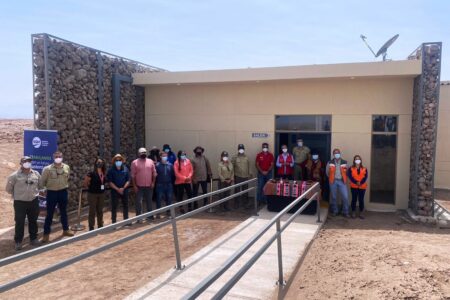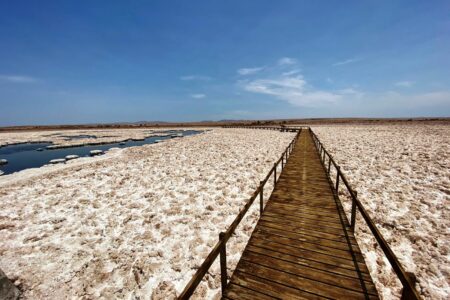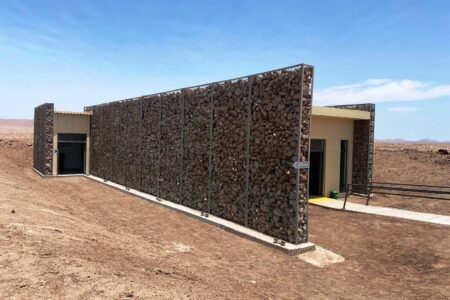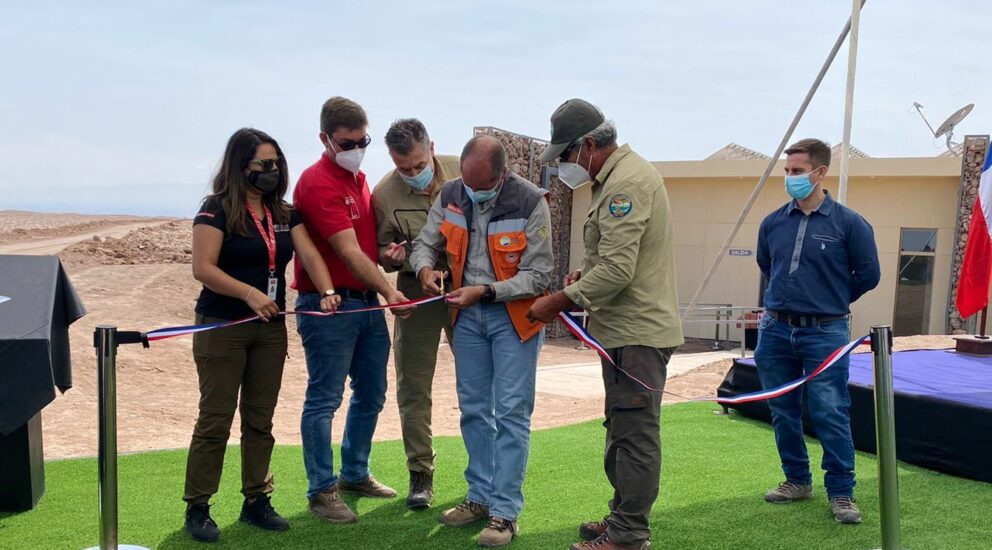
New Center for Environmental Education opens in Salar de Llamara
27/Jan/2022
The project, a joint effort by CONAF and SQM, meets sustainability standards, energy efficiency criteria, uses renewable energy, and was built using local materials.
Promoting environmental education to preserve Tarapacá’s natural and cultural heritage is the main objective of the new Center for Environmental Education (Centro de Educación Ambiental, CEDAM) in Salar de Llamara. The entity is located inside of the Pampa del Tamarugal National Reserve and was unveiled this morning in the middle of the Atacama Desert, 141 kilometers southeast of Iquique.
The ceremony included a traditional land tribute led by CONAF Protected Wilderness Areas Manager Ítalo Rossi and SQM’s Vice President of Planning and Projects Rodrigo Vera. They were joined by representatives of the Huatacondo and Quillagua communities for the traditional ribbon cutting ceremony that marked the opening of the center followed by the first tour of the facilities.
According to CONAF Protected Wilderness Areas Manager Ítalo Rossi, “This center will teach visitors the ecosystemic value of this salt flat, which is home to the last relict of native tamarugo forest and is the only wetland in the intermediate depression in this area of the country, which also has characteristics of scientific interest. For these reasons, understanding and teaching about the value of this territory is key for our institution.”
For his part, SQM’s Vice President of Planning and Projects Rodrigo Vera noted, “This important initiative framed by the responsibilities acquired in the Environmental Qualification Resolution of the Pampa Hermosa project reflects our commitment to care for the environment and ecosystem of the Norte Grande region. This is also stated in our Sustainability Plan, and is associated with various environmental goals and commitments. We are very proud because we are facing an important milestone reached in partnership with the community and CONAF that will focus on environmental education, tourism development, and promoting Tamarugal’s natural heritage.
It is important to note that the center was designed by a local architect who incorporated high sustainability standards that respect the entity’s surroundings and local materials into the design.
CONAF Regional Director Juan Ignacio Boudon explains, “Key elements of the center include energy efficiency, respect for construction materials, and an underground design that does not have a visual impact on the building’s surroundings. Achieving these goals means that the center represents a great opportunity to learn and understand the natural and cultural processes of Pampa del Tamarugal. Visitors can explore the facility with our park rangers year-round.”
Francisco Quiñones, a forestry engineer at SQM who is part of the team responsible for the project, provided more details, noting that “We now have a Center for Environmental Education in Pampa del Tamarugal that seeks to recognize the value of the sector’s flora, fauna and geology. It will allow local students to learn about the entire pampa ecosystem, which they often do not fully understand. They can also learn about how important it is to maintain the flora and fauna of the world’s driest desert.
This type of initiative always requires organizers to elicit the opinions and secure the approval of neighboring communities. In view of this, the project was presented at the regional, municipal, and neighborhood levels prior to its construction. Organizers talked with communities that had an interest in the site and made an effort to include all key stakeholders in reaching the objective.
Jorge Hidalgo Chávez, the President of the Huatacondo Indigenous Community, noted that: “It was very important to us that they build a beautiful building and provide a great deal of information about Huatacondo. As the President and representative of our community, I am happy to see the place where I live represented here, along with its history and the description of the territory. We feel that we are a part of this center, and we hope to keep working together to see how we can continue to care for this beautiful park.”
For his part, Cesar Castro, the President of the Quillagua Aymara Community, explained, “This inauguration is very important because it helps to promote tourism and protect this place, and it serves as a bridge between different entities to promote local tourism routes. We are thus grateful to the private company, the officials, and CONAF for this initiative.”
Finally, the Center for Environmental Education provides information on the characteristics of the territory, Pampa del Tamarugal, its ancestral use, the nature of the Puquíos, archaeology, and land and water biota in order to offer the visitor an overview of a protected area. It also includes a self-guided tour of the path in the Puquíos area.
